I'm convinced that humans aren't wired to understand geometric growth. Linear growth - the notion that you get x more of something each time period - makes total sense to us as the math is easy to do in your head.
But geometric growth - you get x percent more of something each time period - is something that we struggle with (and have forever). Hence the apocryphal story of the origins of chess. As an aside, I once had a professor who said that the only thing that investment bankers understand better than anyone else is compound interest.
Geometric growth is so cunning because for a long time it seems like nothing is happening. You're growing consistently but overall the numbers are small. After all, 10% growth on a base of 100 is just 10 more.
But over time, the base gets bigger. 100 becomes 1,000 and now 10% is all of what you were just a few periods before. The absolute numbers get big faster and at this point things feel like they're exploding - but the growth rate is exactly the same as it was before.
This process also works in reverse. I'm reminded of Hemingway's The Sun Also Rises:
“How did you go bankrupt?” Bill asked. “Two ways,” Mike said. “Gradually, then suddenly.”
Enough digressions.
What's interesting is when geometric growth happens in our physical world on short timescales. One place where this occurs is in cities. They start small and then sprawl. Here are some shots of Vegas over the years:


But what if you don't have space to expand?
This isn't an issue in the vast majority of US cities. But it absolutely was an issue in America's ur-city, New York. For years, New Yorkers have tried to create more land in Manhattan but unless you want to fill in the Hudson, you're out of luck.
And New York City went through a period of geometric growth from basically the founding of America until the Great Depression (geometric growth always plateaus in an s-curve...). The first phase of this growth was focused on Manhattan; it's population peaked in 1910 or so:

This begs the question of what happened to Manhattan during this period of hyper growth when the absolute numbers started to add up? What was it like to be there?
No one alive on earth remembers this time but it turns out that there are actually photos of this timer period. The New York Historical Society recently published the Robert L. Bracklow Collection online.
Bracklow was a stationer and an amateur photographer who snapped photos of Manhattan between 1890 and 1919. Luckily for us, this corresponds to the exact time Manhattan was undergoing massive growth and gives us a unique portrait of what the city looked like during this transition.
Let's explore.
Empty Spaces
One theme that comes across in Bracklow's photos is that despite it's size, Manhattan still had a lot of open space and places could appear eerily quiet at times. (And this isn't due to long exposures; if you inspect some photos you can see a bit of motion blur but there are truly no people in many of the photos).
Perhaps he was only shooting early in the morning but the photos are consistently empty.




Transition
This is a period of transition from "low" to "tall". There are entire city blocks where buildings snake around corners, starting low to the ground and climbing to new heights.

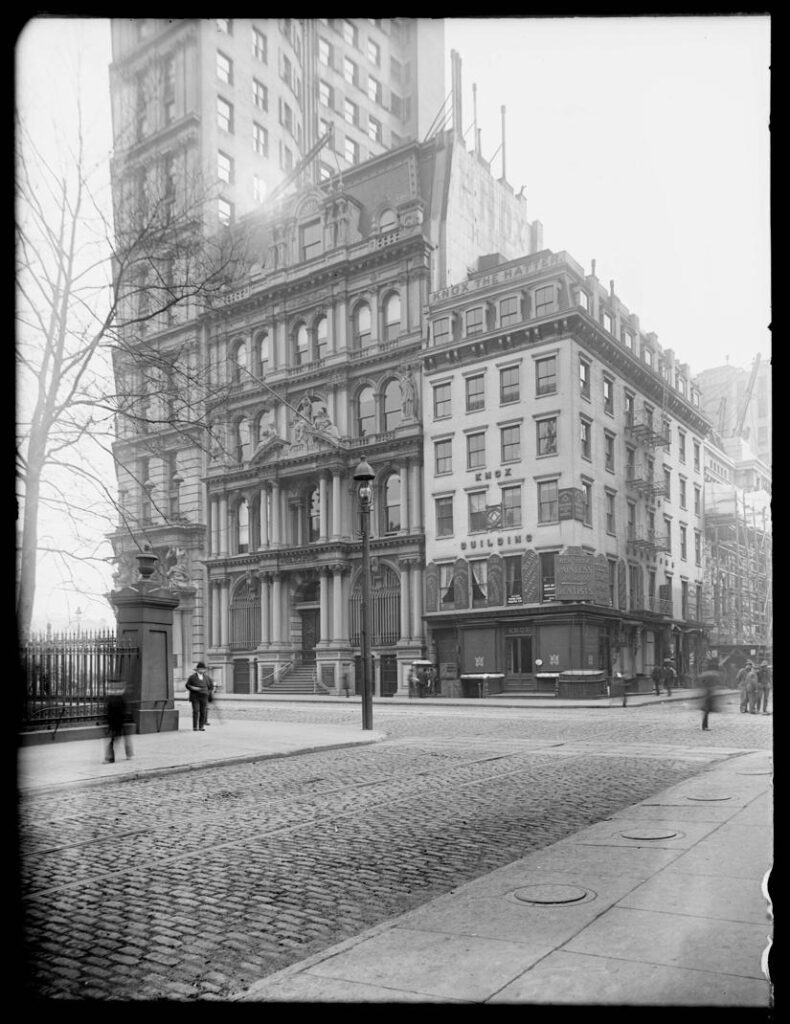
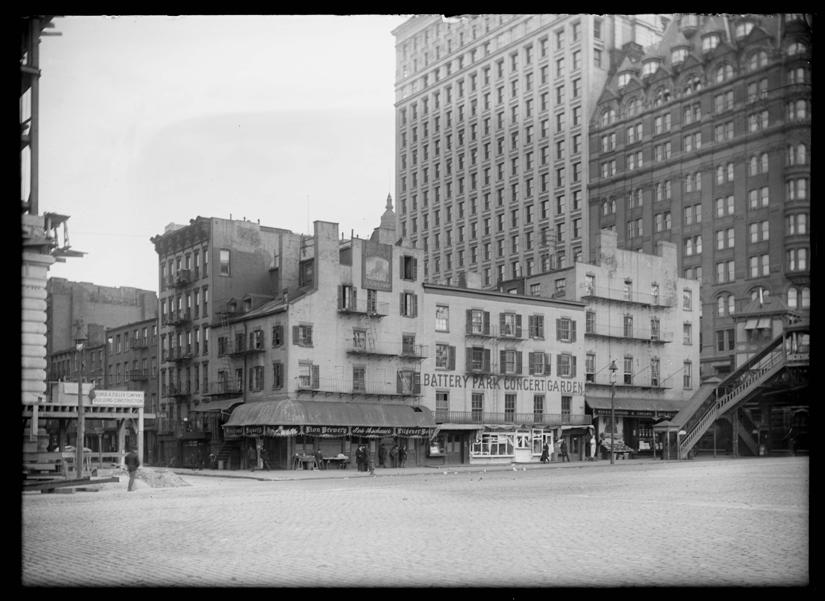


Views appear and disappear quickly. Here's the Waldorf-Astoria in a rapidly changing landscape:


I particularly love this photo of Dutch St (a one block lane in lower Manhattan; I believe Bracklow lived or worked near there) where we see dramatically the destruction of the old low-rise Manhattan and its skyward growth.

From this angle, the city almost looks like a pyramid rising up from the Hudson:



Freestanding Buildings
This was the time period when Manhattan lost all of its freestanding buildings. They simply did not make economic sense and almost every freestanding building - whether Gilded Age mansion or a more pedestrian affair - disappeared:





Actually, I lied. The Mt Vernon Hotel (above) is still there, but it's nestled amongst towers now.
Wooden Buildings
Freestanding buildings weren't the only type of construction to disappear. The growth also meant the end of the wooden building. Not only was it a fire hazard, it also simply couldn't be made tall.
And it turns out that there were a lot of wooden buildings in Manhattan. They didn't come down all at once, rather they slowly were turned out as the neighborhood grew too expensive:







I love the photo below because that is the Met in the background! You could have lived in a two story wooden house next to Central Park just over a century ago!


Poverty
Part of the reason for Manhattan's growth was people leaving the poverty of Europe. And unfortunately sometimes they ended up trading European poverty for American. This was the time of tenements and How the Other Half Lives.

While I'd heard of the downtown slums, I had no idea that there were wooden shanties elsewhere in the city:


Flatiron Building
While economics dictated that buildings would go up, it was a combination of a building code change in 1892 (masonry was no longer needed for fireproofing) and new technology (steel frame construction) that enabled the city to race to new heights.
The embodiment of this is the Flatiron (nee Fuller) building. Here is the view south from Madison Park at the turn of last century:
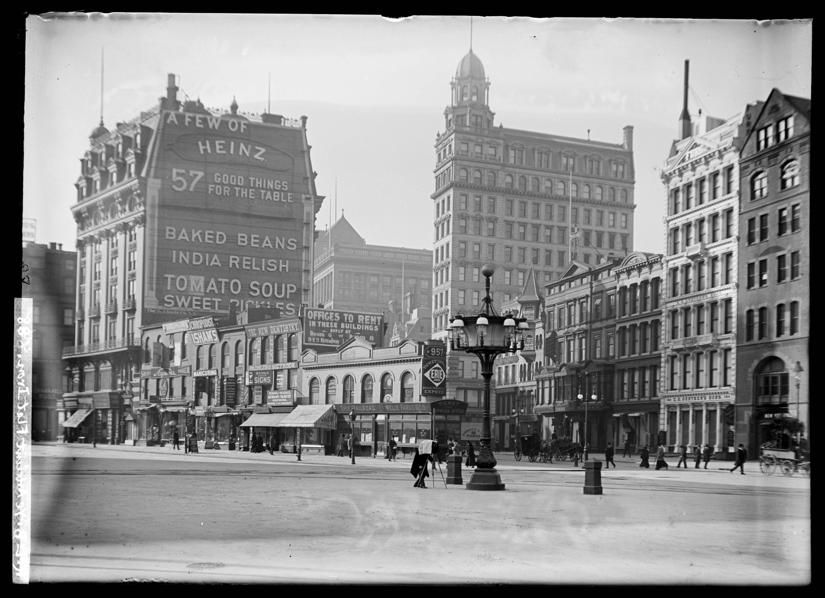
Just a few years later the Flatiron was under construction...

...and the view and the city haven't been the same since. The Flatiron literally towered over its neighbors. It must have felt like a vision for a future New York:




Skyscrapers
This set off the skyscraper building boom and Bracklow catalogued a few of them. While not particularly tall, I thought it was worth including the Pabst Hotel because its as almost immediately torn down to build a new headquarters for the New York Times and led to the naming of Times Square:


The Woolworth building in 1911 showed just how tall the city could build:


I love the image below because it highlights how discontinuous it must have been to live in this era. The Woolworth Building occupies almost the entire sky and looms over everything around it, heralding the future:


Horses & Cars
This is the time when horses gave way to cars. At first we see horses by themselves and the city has build infrastructure to support them:

Then the trains appear and there is an awkward juxtaposition of raw power and horse power:


Later the car starts to appear. What's interesting is how the streets are still empty. Cities before cars were truly pedestrian places.

A Different Context
Almost all of the buildings in these images have been destroyed. This is a bit mind-jarring as they weren't destroyed in war, rather even though many were perfectly good they simply weren't as valuable as they could be. Could this have been the greatest ever peacetime destruction of buildings?
Despite this, many of these buildings still exist and it is fascinating to see them in their original context and scale:


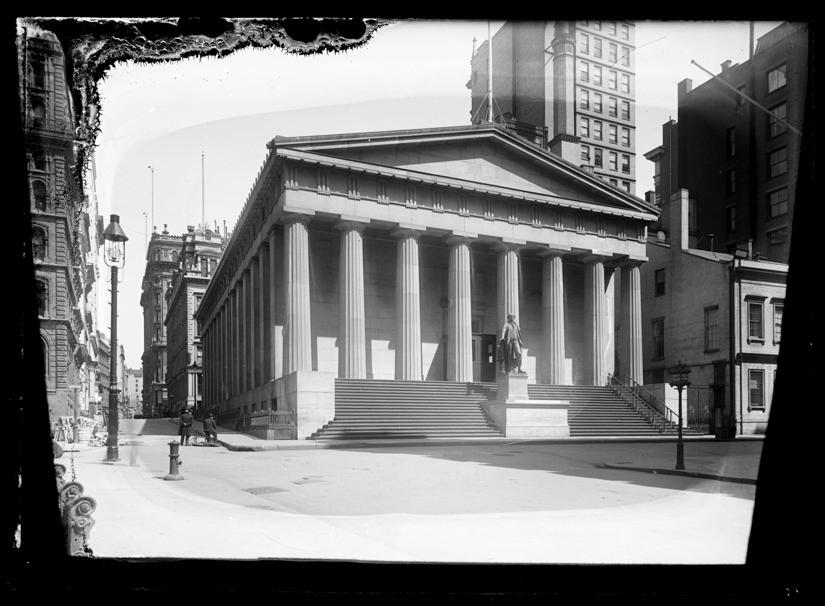


Random
There are many great photos that don't fit into any of the above categories but still show us what life was like during this period of intense growth.




The Croton Reservoir -now the public library - had 25 foot thick walls and used to be the primary water source for Manhattan:




And I've included a few extras because Bracklow developed a great sense of contrast and how to take full advantage of shooting black and white film:


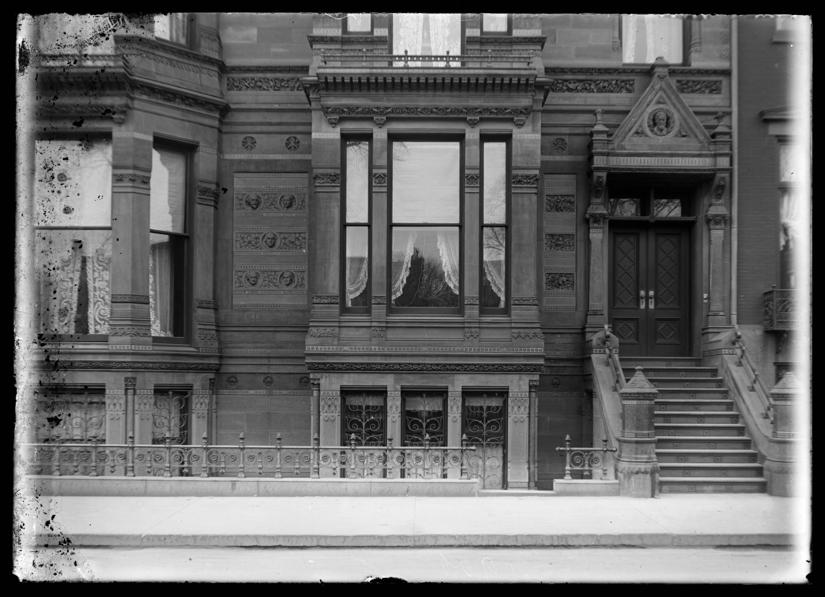

All in all, the Bracklow collection is a rabbit hole to disappear into and wonder what it was like to live in Manhattan during that period of heady growth. I also hope that in a few years some folks will publish similar collections but for Beijing, Shanghai, Lagos, Delhi and other cities. Onwards & upwards!